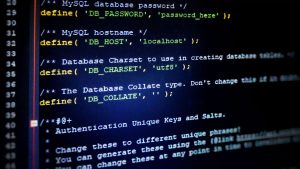Securing BSD Systems with PF and IPFW Firewalls
Firewalls are an essential part of system security, helping to regulate network traffic and prevent unauthorized access. On BSD-based operating systems, administrators have access to two powerful firewall solutions: Packet Filter (PF) and IP Firewall (IPFW). These tools offer granular control over inbound and outbound connections, ensuring that only permitted traffic reaches critical services.
Understanding how to configure and maintain firewalls in BSD is crucial for system administrators and security-conscious users. A properly set up firewall not only enhances security but also improves network performance by filtering unnecessary traffic. While both PF and IPFW serve the same purpose, they differ in syntax, capabilities, and ideal use cases.
This article provides a step-by-step guide to configuring PF and IPFW on BSD-based systems. It covers installation, rule creation, logging, and best practices to ensure a secure and efficient firewall configuration. By the end, users will gain the knowledge they need to safeguard their BSD systems effectively.
Understanding BSD Firewalls: PF vs. IPFW
BSD operating systems offer multiple firewall options. PF serves as the default for OpenBSD and FreeBSD, while IPFW works primarily in FreeBSD. Each option provides unique strengths and suits different networking environments.
PF, or Packet Filter, delivers flexibility and a powerful syntax. It includes features such as NAT (Network Address Translation), stateful packet inspection, and traffic shaping. Its rule-based approach lets administrators customize complex firewall policies easily.
IPFW operates as a rule-based firewall that supports dynamic rules and advanced traffic filtering. Integrated tightly with FreeBSD’s networking stack, it provides an efficient solution for routing and packet forwarding. By comparing these firewalls, users can choose the one that best meets their security requirements.
Setting Up PF on BSD Systems
Before configuring PF, make sure the system has it enabled. FreeBSD and OpenBSD include PF by default, but administrators may need to activate and configure it properly.
To enable PF, users must edit the system configuration files and create a ruleset. The primary configuration file for PF is located at /etc/pf.conf. Rules in this file define how the firewall handles incoming and outgoing traffic.
After defining the ruleset, load and enable PF using the following commands:
sh
CopyEdit
pfctl -f /etc/pf.conf # Load the configuration
pfctl -e # Enable PF
After enabling PF, it is essential to test the configuration to ensure that the firewall functions as expected.
Defining Firewall Rules in PF
PF operates on a rules-based approach where administrators define filtering, blocking, and forwarding rules. A simple example of a basic rule set looks like this:
sh
CopyEdit
block in all
pass out all keep state
pass in on lo0
This ruleset blocks all inbound traffic, allows outbound traffic while keeping connection states, and permits local loopback communication.
For advanced configurations, administrators can define more specific rules for services like SSH, web servers, and DNS. These rules can be adjusted based on security needs and traffic policies.
Monitoring and Managing PF Logs
Logging plays a crucial role in effective firewall management because it helps administrators monitor traffic activity, detect unusual patterns, and troubleshoot configuration issues more efficiently. Administrators can analyze logs to identify blocked or allowed connections, verify rule effectiveness, and adjust policies to improve security. PF offers built-in logging features, and administrators activate them by adding the log keyword to specific firewall rules. Consistently reviewing these logs ensures better visibility into network behavior and strengthens overall security management.
Logs can be viewed using the tcpdump command:
sh
CopyEdit
tcpdump -n -e -ttt -i pflog0
Regularly reviewing logs helps administrators identify potential security threats and fine-tune firewall rules to enhance system protection.
Configuring IPFW on FreeBSD
Unlike PF, IPFW must be explicitly enabled in FreeBSD before use. This can be done by modifying the system configuration:
sh
CopyEdit
sysrc firewall_enable=”YES”
sysrc firewall_type=”workstation”
service ipfw start
Once enabled, firewall rules can be defined to regulate network traffic. These rules are written in a numbered format, where each rule has a specific priority.
To list the currently active rules, use:
sh
CopyEdit
ipfw list
By structuring rules effectively, administrators can create a strong security perimeter for BSD systems.
Creating and Applying IPFW Rules
IPFW rules follow a numbered sequence, with lower numbers having higher priority. A simple example of an IPFW ruleset is:
sh
CopyEdit
First one is – ipfw add 100 allow ip from any to any via lo0
Then the second is – ipfw add 200 deny ip from any to 192.168.1.100
Lastly is – ipfw add 300 allow tcp from any to any 22 keep-state
These rules allow local loopback traffic, block access to a specific IP address, and permit SSH connections while maintaining stateful tracking.
Applying these rules ensures that unauthorized access is blocked while allowing necessary services to function correctly.
Testing and Debugging Firewall Configurations
Once you set up firewall rules, test their effectiveness immediately. Use tools like ping, telnet, and nc to verify whether the firewall filters traffic correctly.
For example, to check if the firewall allows SSH traffic, try connecting from an external machine.
sh
CopyEdit
ssh user@server_ip
If the firewall blocks the connection despite an allow rule, review the logs and adjust the firewall rules to fix the misconfiguration.
Maintaining and Updating Firewall Rules
Review and update firewall rules regularly to keep up with changing security requirements. Conduct periodic audits to identify unnecessary open ports and refine filtering policies.
Both PF and IPFW support rule reloading without restarting the system. For PF, run the following command:
sh
CopyEdit
pfctl -f /etc/pf.conf
With IPFW, you can modify rules dynamically without rebooting the system:
sh
CopyEdit
ipfw flush
ipfw add <new_rules>
Regular maintenance ensures that firewall configurations remain effective in protecting BSD systems.
Building a Secure BSD Firewall Strategy
A well-configured firewall is a crucial component of BSD system security. Whether using PF or IPFW, understanding how to define, test, and maintain firewall rules ensures optimal protection.
By implementing best practices, regularly reviewing logs, and adjusting rules as needed, administrators can create a secure and efficient network environment. With proper firewall management, BSD users can safeguard their systems against unauthorized access and potential threats.










No Responses